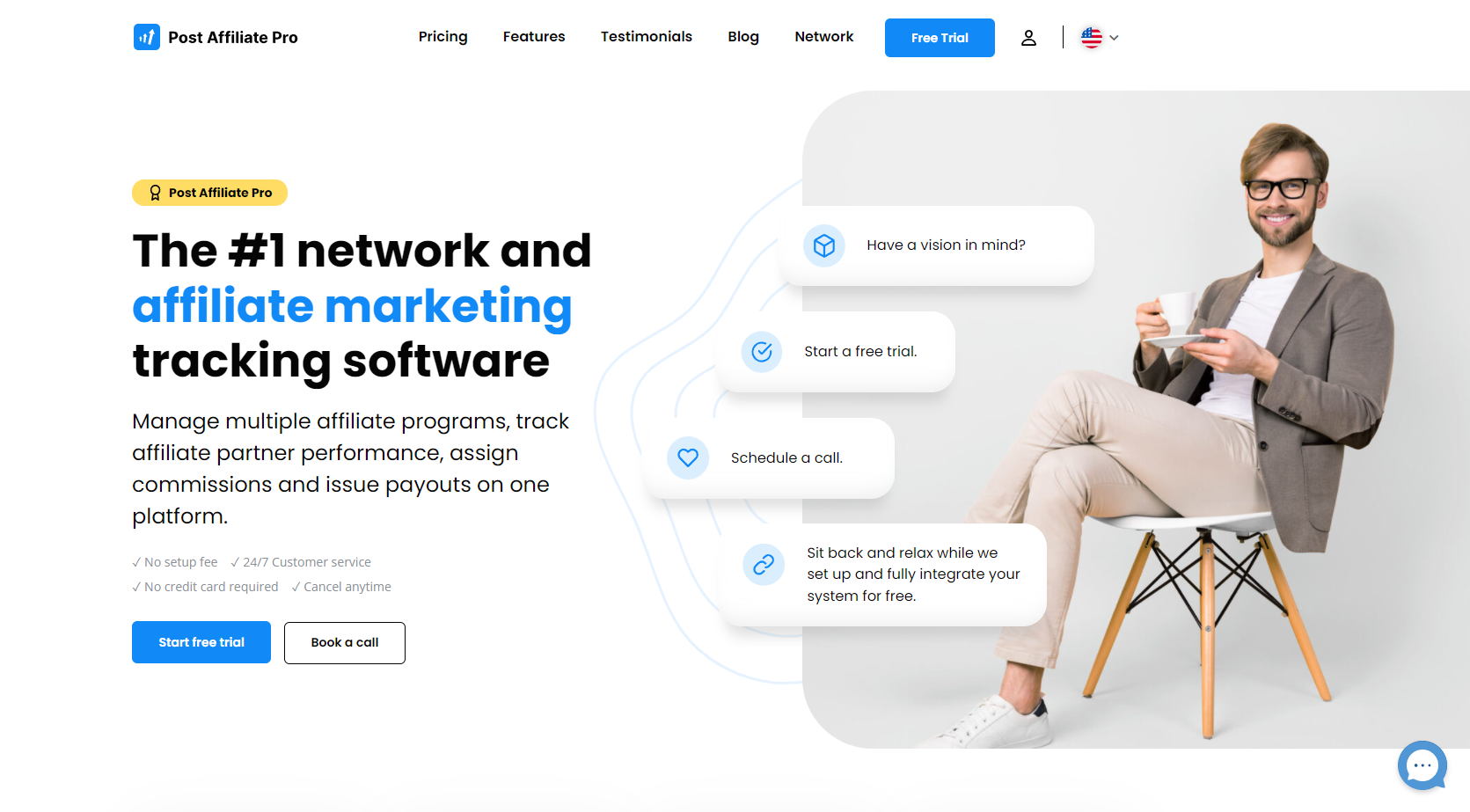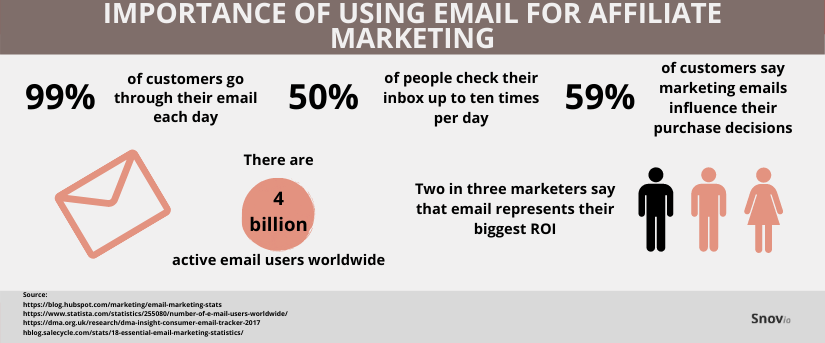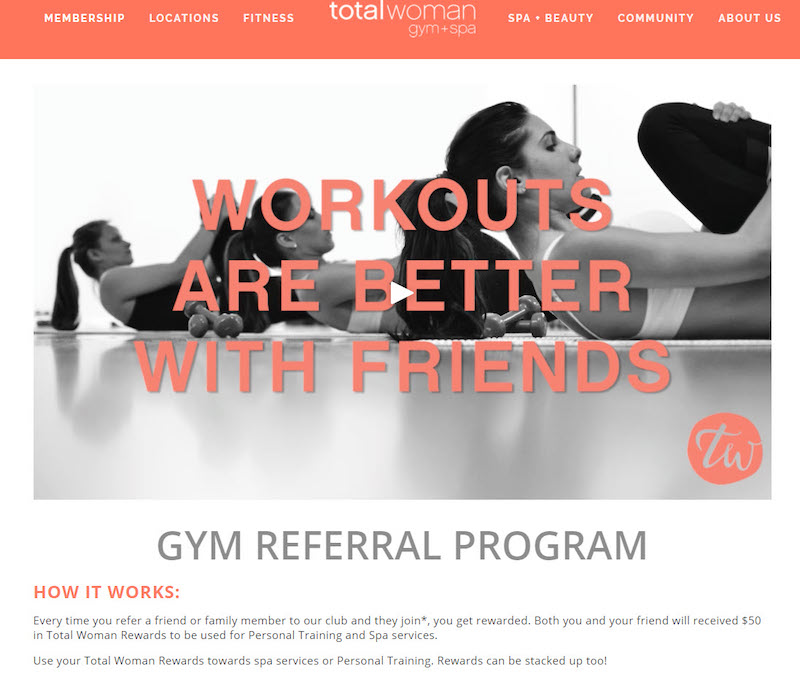What is lead generation?
Lead generation is an age-old practice. Lead generation is a marketing strategy that entices prospective customers to interact with your brand is called lead generation. In order to sell your business, you will identify potential buyers using any six of the marketing techniques mentioned in this article, and then encourage them to visit your website. Typically, you can generate leads by using a number of strategies, including: email campaigns, affiliate marketing, call-to-action buttons through social media posts, content marketing campaigns, advertising, etc. It is recommended to examine your customer relationship management (CRM) data in order to determine the best strategy based on your target customer and your business model.
How does lead generation work?
Identify your target audience and their buying behavior, then implement at least one marketing strategy to drive them to your business’ website in order to generate leads.
Suppose you, the business owner, have established an affiliate marketing program, collaborating with a social media personality who has built great relationships with customers of their own. What can your company do to capitalize on the potential customers in order to send them down your marketing funnel? By describing their buying journey as they talk about your product(s) and posting your company’s links on their website or profiles, your affiliate partner can create high quality leads for you. It’s a great way to reach a demographic who may otherwise be cold leads, by leveraging a trusted internet personality they may follow in order to begin their journey down the sales funnel.
Now that you have an affiliate marketer on your side, the two of you can utilize relationship marketing, where you emphasize the customer experience and service in order to retain their business, thus increasing lead conversion and revenue for your company and the commission you obtained from the affiliate program.
You might also encourage your marketing team or to capitalize on search engine functions by utilizing their understanding of search engine optimization (SEO) in order to engage warm leads while capturing possible hot leads.

What are the most important metrics (KPIs) for lead generation?
With Key Performance Indicators (KPIs), you can turn your company’s high-level goals into actionable tasks that produce tangible results. Post Affiliate Pro provides several key performance indicators that you should consider in order to grow your business. The metrics tie into the marketing funnel you will use to generate leads, and ultimately revenue will be generated from it.
Click through rate
As you are already familiar with call-to-action buttons, the click-through rate (CTR) metric is the next logical step. Using CTRs, you can calculate how many people clicked your CTAs in emails, ads, and landing pages.
Take a look at the Post Affiliate Pro landing page:

A CTR measures the number of viewers coming to this page (either via an advertisement, blog post links, email, search engine, or other way), and calculates it by the number of clicks each CTA button receives.
Be sure to maintain engaging content on your site, especially the landing page, in order to appeal to your target audience.
Conversion rate
The conversion rate metric is used to show your sales team the percentage of visitors to your website who complete desired goals (becoming a conversion) compared to those who simply view your site and then leave.
It is important to have valuable content on your website as well as a compelling CTA design and placement that will attract a potential customer. With this, implementing marketing strategies such as affiliate campaigns or social media engagement will go a long way towards converting your leads into customers.
In the event the viewer is not interested in clicking around after seeing your landing page, analytics will reflect that, and you’ll need to find out why. Have you written relevant content, or is the content not valuable enough?
As a result, there is a subcategory: bounce and exit rates, however, the bounce rate is almost directly mentioned in this particular section of the blog. The number of visitors to a single page of a website is calculated and divided by the number of visitors to the entire website.

Average session duration
Now, you need to consider how long users spend on your website. Visitors to your website begin their viewing session upon entering and end it either by leaving or after 30 minutes of inactivity. You can see that a typical viewing session can last from mere seconds to however long it takes to make a sale per user. In this way, your sales team will be able to determine the average time that anonymous visitors spend on your website and implement different marketing tools to improve their generation strategy in order to ensure that your website will meet the needs of each potential buyer.
Qualified leads
Now let’s discuss different types of leads. In the beginning, there are unqualified leads with poorly defined problems, who do not control their budget or have the authority to purchase. With the right strategy, they can become qualified leads, but for now we’ll stick to qualified leads, which is anyone who willingly provides you with information and who might be a potential customer. It is impossible to set a standard criteria since every company entices its prospects in their own way, but to be considered a qualified lead, the person must have provided the information your company seeks. Purchasing email lists and sending a cold email is not how you would obtain these types of leads.
It’s best to approach qualified leads with the mindset of those who understand the digital marketing funnel – categorize these leads into marketing qualified and sales qualified leads.
Marketing qualified leads (MQL) are considered the first stage of qualification. As long as MQLs provide information such as their company name, email address, etc., they satisfy the minimum requirements to move down the sales funnel for further evaluation, which marks the beginning of converting leads into customers.
Next is the sales qualified lead (SQL). A lead who has enough information to warrant sales outreach will now be referred to as an SQL. An SQL will receive a personalized sales follow-up, therefore deemed valuable. Here, SQLs may have provided more specific information such as their budget, company size, and their role within it, or they may have demonstrated an increased level of interest in your product. New leads can also be quickly turned into SQLs if they are on your target list of leads following a social media marketing campaign, for instance, granting you a higher commission rate.
Knowledge base resources
6 best tactics for lead generation
That’s enough about leads, let’s get to the point. Ultimately, you came to Post Affiliate Pro to learn about lead generation. Talk to your sales department about the various online channels at your disposal in order to find out which tactics are most effective for your company.
Email marketing
When it comes to cold email campaigns, or keeping up with current/previous clients, never underestimate the influence email can have on the sales cycle. You have access to an array of lead generation tools that can serve as email providers, so decide why you want to create this campaign. Why are you trying to engage potential leads? Is it to make a sales pitch or are you hoping to generate more leads? Your goals will determine the content of your email marketing strategy.

In your email, you’ll want to consider providing exclusive offers such as discounts, referrals, e-books, anything to get customers back onto your website. Be sure to include CTAs, it is vital for your business and the prospective customers that CTA links/buttons are provided in your email.
For more suggestions, there are other steps you may wish to research before you begin your email marketing campaign. It has been stated that email is the undisputed king for B2B marketers.
Blog posts
If you want your business to grow, you should also work on search engine optimization (SEO) and drive more traffic to your website using content marketing. This is where blog posts and, to some degree, white papers come into play. How do you do this? You can exercise outbound marketing by posting blogs regularly. Newsletters with your blog excerpts can help drive traffic to your site and build links as well as providing freemium products or run some coupon marketing campaigns.
Part of the marketing process is figuring out what to you blog about. Talk about the topics your business covers. Post Affiliate Pro, for example, has numerous articles that describe online tools, lead nurturing, and guides that they use and provide which they can offer prospective clients. Don’t forget, maintaining some evergreen content can help you stand out above your competitors.

Networking
Aside from blogging and getting bloggers to contribute, you should also consider affiliates, influencers, critics, journalists, etc., in order to build a brand and gain a competitive advantage. It is beneficial to be active on social media platforms such as Instagram, because your ads will be more targeted towards specific clients you can interact with. Based on the reports you receive, you can target a specific buyer persona more accurately (or you may need to consider retargeting your strategy).
Businesses also use influencer marketing to attract new customers because it works like an endorsement by someone who has a large following on their own social media platforms.
Keep in mind the differences between an influencer and an affiliate marketing campaign. Both are popular methods, but there is a difference regarding how either gets paid and what their specific marketing goals happen to be. Influencers should increase brand awareness and affiliate networks should be utilized for cost-effective acquisitions, equipped with their own affiliate link that will drive business leads to your business – usually with a discount. This will provide a passive income to both you and the affiliate, while you focus on other online marketing strategies.
Create gated content
A qualified lead who has fulfilled an opt-in form provided by your business should be equipped with online material to move one step closer to a sale. You will be able to give these leads an exclusive look into the content you are offering, whether it be an email address or otherwise. It is more likely that users will find your site through a blog post found through a search engine or social media channel when gated content is available. When it comes to B2B marketing, straightforward links and ads tend to attract the most attention, resulting in more qualified prospects.
For inbound marketing, gated content is not content for cold leads; nor is it behind a paywall. It simply requires readers to take action, such as signing up for a free trial with Post Affiliate Pro.
When you consider strategizing your gated content, there are 5 examples here you may want to consider.
Referral marketing
Word of mouth is still a very useful form of advertising. The concept of customer referrals is very similar to influencer marketing as they both are successful lead generation campaigns. Customers may inform a potential lead to you based on some sort of relationship they have with their family and friends. When doing B2C marketing, this is a useful technique.

Consistency
A steady stream of generation content involves posting content to your site and sending out emails on a regular basis. The search engines update frequently with new information and keywords, so you need to focus more on your inbound marketing strategy, as outlined above, to survive.
How can affiliate advertisers profit from an effective lead generation strategy?
When an affiliate publisher helps generate a sale from their website, they receive a revenue share. If the sales rate goes up, the buying window opens and the revenue goes up as well, so that’s a good return on investment (ROI) for you.
So how can you profit from an effective strategy? You need to build and maintain strong customer relationships, to become a sort of social authority in the eyes of your customers. Leads to sales will convert better when people trust you (or your affiliate partner). In order to build and appeal to future customers, affiliates can use a blog, B2B marketers, YouTube, Twitter, and other forms of social media – posting links and information about you, the affiliate marketer.
Other generation tactics include researching keywords to boost your SEO, associating with B2B companies, and advertising channels (paid ads and SEO marketing). The goal of each strategy is to channel leads through the sales funnel, increasing your conversion rate and profit margin.
Here is also a list of secrets to help you make your money.
Conclusion
Having a B2B marketing affiliate partner can help you focus on your strategy and maximize your ROI. Affiliate management software provider Post Affiliate Pro provides lead generation tools to increase B2B leads. As an affiliate merchant, you should determine what would be best for your business.
Don’t restrict yourself to one marketing strategy. Gaining outbound and inbound leads can be achieved using email outreach tools, blogging, influencers for B2C marketing, and keyword research to find your ideal customers.
Frequently Asked Questions
What is a lead generation in digital marketing?
Leads are prospective consumers. At least one of the marketing channels that a company uses to convert visitors into leads has garnered a visitor’s interest and the lead is considering the company’s product. A marketing lead can soon become an actual customer, enabling your business to survive.
How can a business get more leads?
There are numerous ways to generate leads: affiliate marketing, working with influencers, posting blogs regularly, email campaigns, etc. Practicing some of these marketing strategies consistently will gain you more leads.
How to create an effective lead generation strategy?
A variety of marketing strategies can be used such as working with an affiliate partner, doing SEO research, blogging, buying advertisements, etc. Keep a close eye on your analytics on a regular basis and remain consistent with your particular methods to help you maintain control and see how the different methods are affecting your business.
What is the difference between lead generation and lead nurturing?
While lead generation focuses on finding new leads, lead nurturing focuses on forming a strong relationship with the consumer and turning them into a loyal customer.
What does MQL and SQL mean?
Marketing qualified leads and sales qualified leads.
What is a lead in affiliate marketing?
A lead in affiliate marketing refers to a potential customer who has shown interest in a product or service by taking a specific action, such as signing up for a newsletter, filling out a contact form, or requesting more information. These leads are valuable to affiliate marketers as they can potentially be converted into paying customers.
What is a lead in affiliate marketing?
A lead in affiliate marketing refers to a potential customer who has shown interest in a product or service by taking a specific action, such as signing up for a newsletter, filling out a contact form, or requesting more information. These leads are valuable to affiliate marketers as they can potentially be converted into paying customers.
Share this article
9 affiliate marketing tools that’ll help you run your affiliate program
Discover 9 essential tools to supercharge your affiliate marketing program! From visual content creation with Visme to comprehensive management with Post Affiliate Pro and audience insights via Smartlook, these tools will boost your sales and refine your strategy. Dive in to maximize your affiliate success!
Explore Post Affiliate Pro's comprehensive Affiliate Program Directory, featuring diverse opportunities with competitive commissions and flexible payout options. Discover programs across various industries, accept worldwide traffic, and elevate your affiliate marketing game. Join today and maximize your earnings!
Geofencing vs. geotargeting in affiliate marketing
Discover the power of geotargeting and geofencing in affiliate marketing! Learn how these location-based strategies can enhance your marketing efforts by targeting specific audiences with precision. Geotargeting focuses on demographic and behavioral criteria, while geofencing creates virtual boundaries to engage local users. Ideal for small businesses, these techniques ensure cost-effective campaigns and higher conversions. Unlock the potential of location-based marketing and boost your ROI!
The leader in Affiliate software
Post Affiliate Pro offers a comprehensive affiliate software platform to manage multiple affiliate programs with ease. Enjoy no setup fees, 24/7 customer support, and a free 1-month trial. Ideal for small and large businesses, it features precise tracking, automated workflows, and customizable tools to boost your affiliate marketing success. Try it now and streamline your affiliate operations effortlessly!
How to keep your affiliates happy with split commissions
Discover how Post Affiliate Pro's SplitCommission™ feature can boost affiliate motivation and engagement by fairly distributing commissions among all contributors to a sale. Learn how to implement this innovative model to enhance your affiliate program's success.
Discover Post Affiliate Pro's flexible pricing plans tailored to fit your business needs, with options for Pro, Ultimate, and Network packages. Enjoy a free trial with no credit card required, no setup fees, and the freedom to cancel anytime. Benefit from features like unlimited affiliates, advanced reporting, customizable interfaces, and lifetime support. Save up to 20% with annual billing and take advantage of more than 220 integrations. Perfect for businesses seeking to enhance their affiliate marketing efforts. Visit now to find the ideal plan for you!












